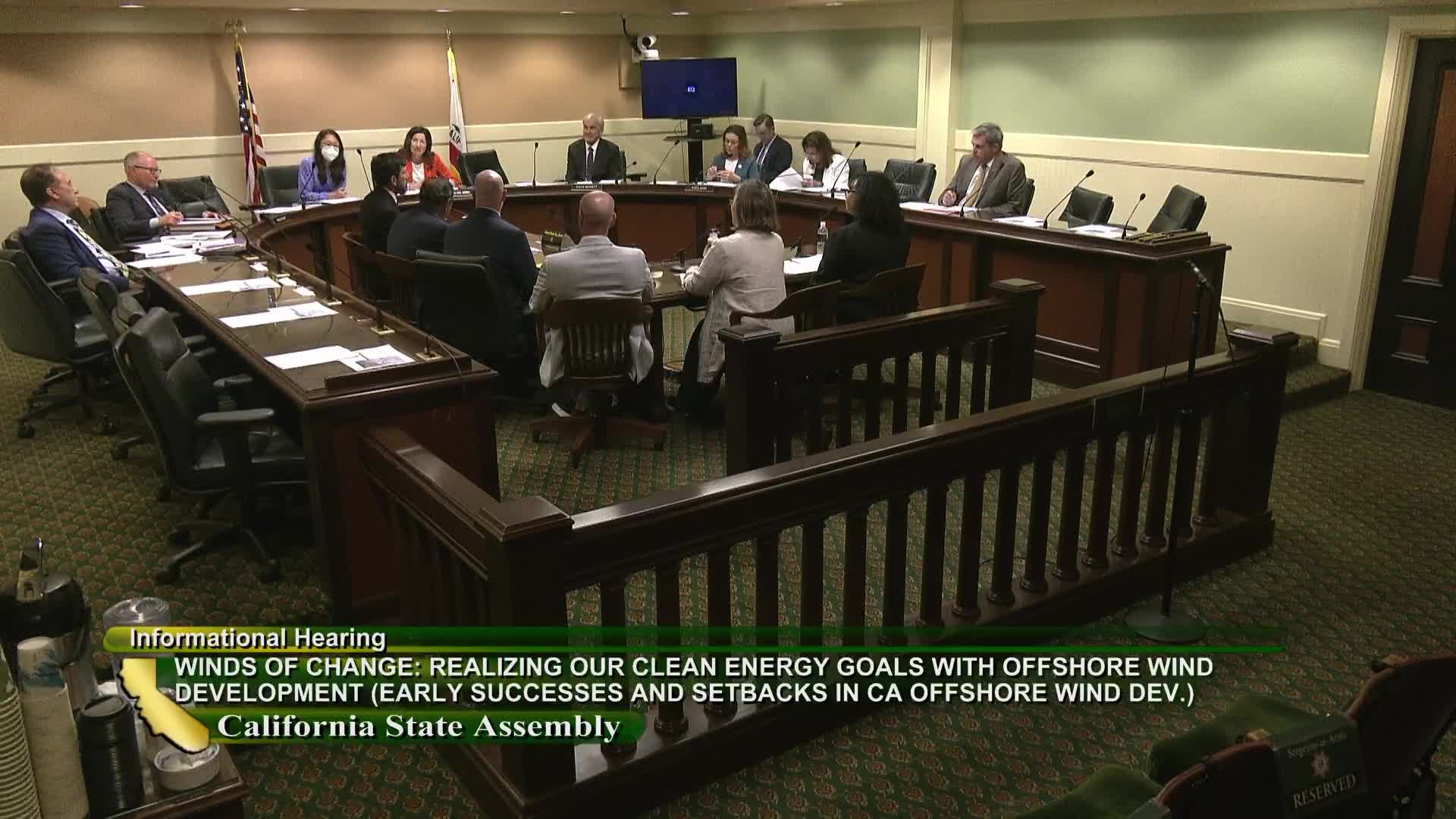Humboldt Bay project aims to revolutionize offshore wind energy
August 14, 2024 | California State Assembly, House, Legislative, California
This article was created by AI summarizing key points discussed. AI makes mistakes, so for full details and context, please refer to the video of the full meeting. Please report any errors so we can fix them. Report an error »

In a recent government meeting, discussions centered on the ambitious Humboldt Bay heavy lift marine terminal project, which aims to bolster offshore wind energy development. The project manager highlighted the significant progress made over the past two and a half years, including collaboration with tribal governments and community groups, and securing substantial federal funding.
The project has received $426 million in federal grants, alongside additional funding for permitting and design, positioning Humboldt Bay ahead of other ports in California. This funding is crucial for the construction of new port infrastructure, which is necessary to support the manufacturing and assembly of large offshore wind turbines. The manager emphasized that land-based wind turbines are limited in size due to transportation constraints, whereas ocean-based turbines can be significantly larger, necessitating a complete overhaul of port facilities.
The proposed terminal will occupy over 160 acres, with the majority of costs attributed to the construction of wharves, which are managed by the Humboldt Bay Harbor District. The project is expected to require a billion-dollar investment in public infrastructure, with a focus on community benefits, including environmental restoration and support for local residents and tribes.
Three types of port terminals are deemed essential for the success of offshore wind energy: manufacturing facilities for turbine components, staging integration sites for assembly, and maintenance terminals for operational support. The project manager stressed the importance of early public investment to attract private funding for these facilities, which will play a critical role in meeting California's renewable energy goals.
The permitting and design process for such a large-scale project is projected to take three to six years, underscoring the urgency for timely public investment to facilitate the transition to offshore wind energy.
The project has received $426 million in federal grants, alongside additional funding for permitting and design, positioning Humboldt Bay ahead of other ports in California. This funding is crucial for the construction of new port infrastructure, which is necessary to support the manufacturing and assembly of large offshore wind turbines. The manager emphasized that land-based wind turbines are limited in size due to transportation constraints, whereas ocean-based turbines can be significantly larger, necessitating a complete overhaul of port facilities.
The proposed terminal will occupy over 160 acres, with the majority of costs attributed to the construction of wharves, which are managed by the Humboldt Bay Harbor District. The project is expected to require a billion-dollar investment in public infrastructure, with a focus on community benefits, including environmental restoration and support for local residents and tribes.
Three types of port terminals are deemed essential for the success of offshore wind energy: manufacturing facilities for turbine components, staging integration sites for assembly, and maintenance terminals for operational support. The project manager stressed the importance of early public investment to attract private funding for these facilities, which will play a critical role in meeting California's renewable energy goals.
The permitting and design process for such a large-scale project is projected to take three to six years, underscoring the urgency for timely public investment to facilitate the transition to offshore wind energy.
View full meeting
This article is based on a recent meeting—watch the full video and explore the complete transcript for deeper insights into the discussion.
View full meeting
